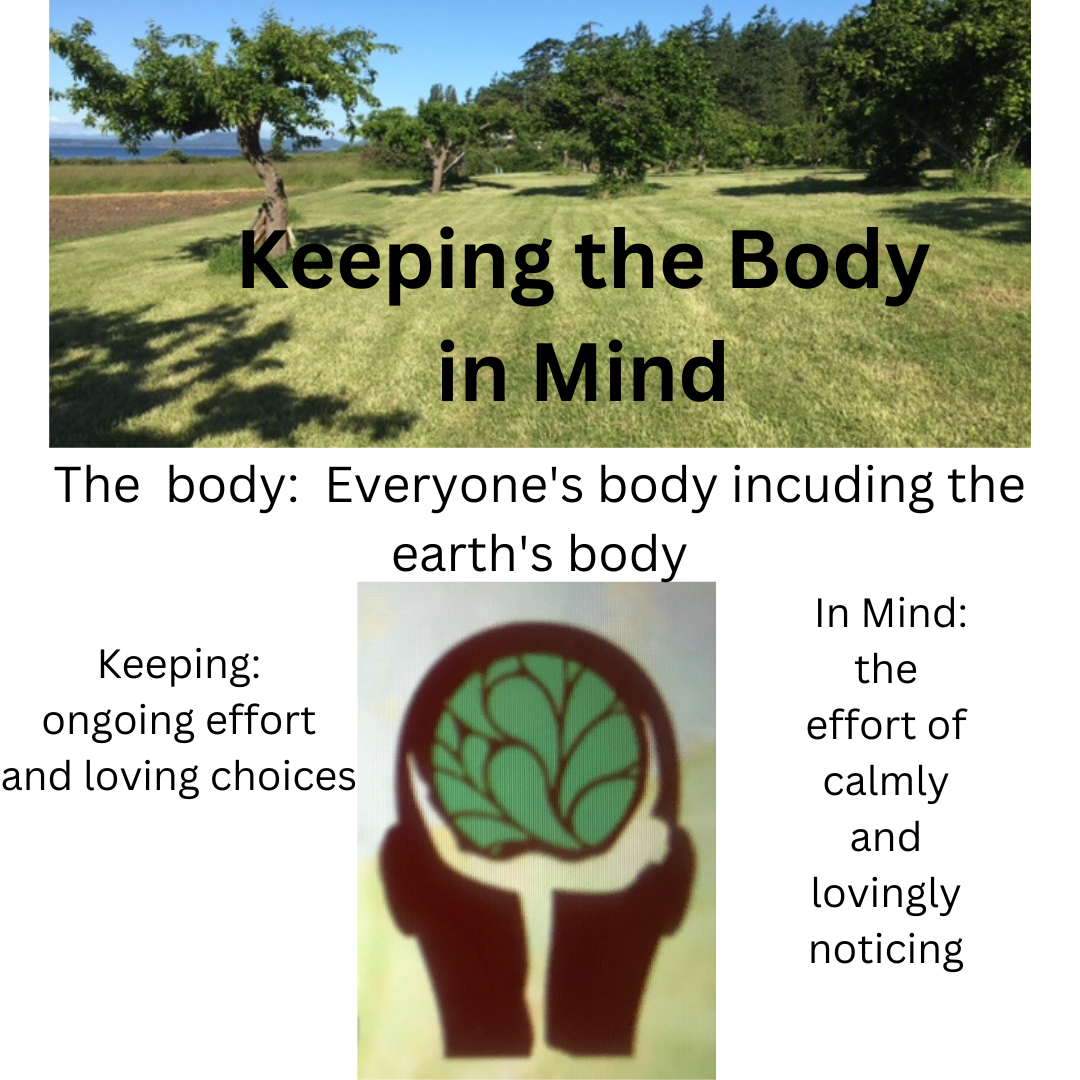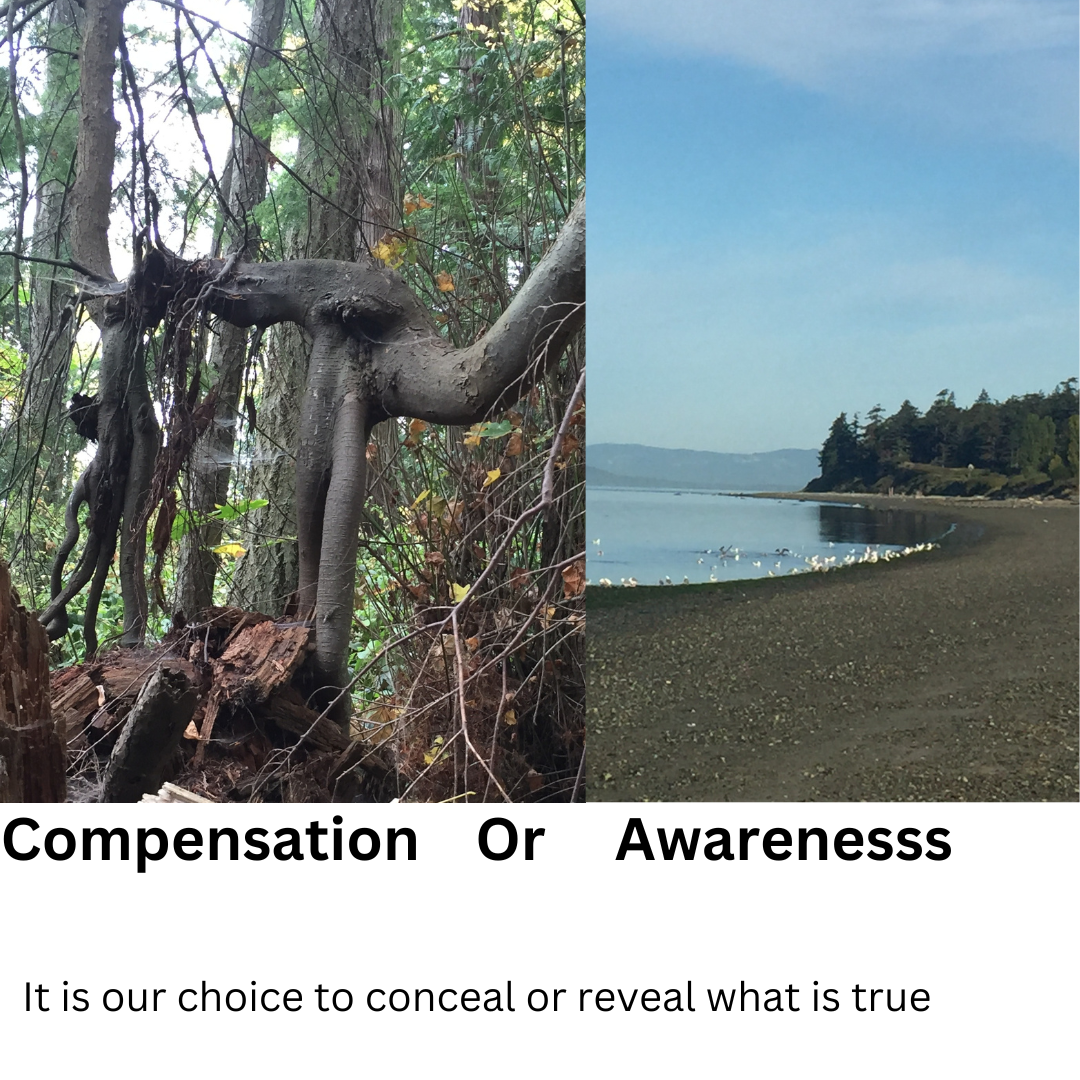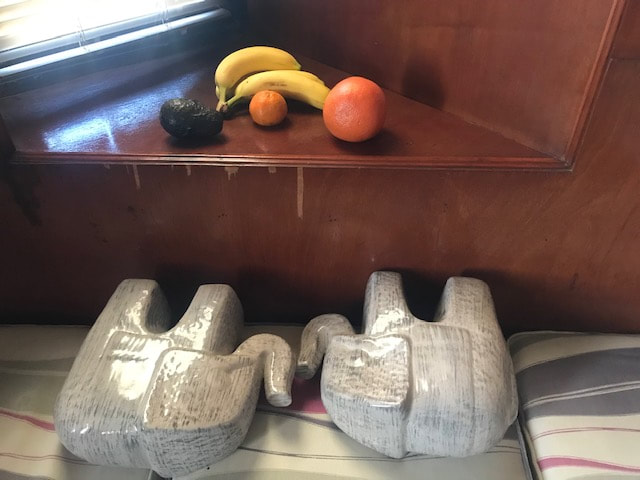|
Words are important to me (always have been) so I want to break down the above concept: How I created it, how I used it and what it means on a deeper level.
The history: Isn’t it curious how words and phrases can lead us through life? How has that worked for you? I coined the phrase ‘Keeping the Body in Mind’ in the early 2000’s before I had recorded my album and written my book. At that time I liked the rhythm of the words and the fact that it addressed body and mind which is what my work has been about for many years. I was a pioneer in bodymind work and having a defining phrase really helped me move forward on an educational front. It sustained me when I was writing the songs for my cd. It became the inspiration and domain name for my first website and workshops I gave. It lead to the phrase in one of my song lyrics on that cd, “Note by Note” that quite a few years later became the title I gave my book. Talk about one thing leading to another! Those two phrases have been behind all my personal healing that has kept my music and writing flowing. The deeper meaning: I use the words, “the body” intentionally because I want to imply something bigger than my body or your body. I want to imply everyone’s body including the earth’s body that we walk on. Using the verb ‘Keeping’ at the beginning of the phrase recognizes that the effort of bringing together body and mind is an ongoing effort. It also means not allowing energy from your bodymind to just disperse or be wasted. As my acupuncturist used to say, “To stay healthy you must ‘keep’ your energy”. What she meant was to think about where my energy was going and make conscious choices, implying that my energy was precious---so many of us need to hear this cue to caring for all parts of ourselves. The phrase “in mind” is tricky because which ‘mind’ am I referring to? Seeing as I have a bit of an obsessive mind I definitely do not want it to be in the part of my mind that says, “You have to be perfect or, Be careful you might make a mistake”. We cannot separate the mind from the body or the brain so I use the words ‘in mind’ in the following way: The medial pre-frontal cortex is the noticing part of the brain and also helps to guide the rest of our brain much like a conductor directs an orchestra. It is the part of the brain that influences the ‘mind’ (all parts of the brain) to have perspective, especially over fear and self-criticalness. I choose this for a definition of ‘in mind’. The graphic above expresses well the feeling of holding and being held. We need this approach to grow a healthy bodymind connection and to do it in a self and ‘other’ loving way that moves us forward. Link to my song ‘Everybody Has the Gift to Heal Themselves’ that conveys the feeling of “Keeping the body in Mind” This was co-written by Debra Alexander and sung by Suzie Vinnick. You can also buy it on itunes https://drive.google.com/file/d/1oU0MmEEPQClpW8gTQPNeDIyDfM6-Oo_8/view?usp=share_link
0 Comments
Remember when you are reading this list to put your internal critic outside of you--- maybe far away in an oasis in a desert. And remember not to criticize yourself for being self-critical---just say ooops! And recalibrate towards an atmosphere of self-acceptance.
Having the leftovers of painful events is not your fault (PTSD-- post traumatic stress syndrome). You were doing the best you could to survive/connect at the time. The more standard leftovers are: flashbacks, nightmares, few or no memories and self destructive behaviors such as substance abuse. Those are the ones you see in movies. Some less recognized ones are: numbness, insomnia, loss of a sense of future, loss of interest, loss of sense of “who I am”, chronic pain and feeling ‘out of body’. Some painful feeling states are; hyper vigilance, anxiety and mistrust, shame and worthlessness, irritability and depression and general emotional overwhelm commonly called flooding. There you have it—human beings have been resourceful in finding ways to stay alive even if that life has scars. I have found that the dissociative aspects of PTSD have been the hardest for me to deal with: a de-coloring and narrowing of my life in order to avoid the “no go” zones of activities that might trigger me. Everyone is unique in their patterns but we all have a lot in common too. Learning about my nervous system and its extremes (fight or flight and submit/ freeze) and how it feels to be in the functional zone; what I call the ‘window of possibilities’ (what is often called the window of tolerance) was super important to my growth and healing. There is a lot written about this and I will reference a few resources below. In order to get a solid understanding of what PTSD recovery looks like, it is also important to hear other peoples’ stories that have had similar problems/ptsd as you do. This decreases the isolation feeling (common in ptsd) and often gives us new ideas on how to “get out” of the trap and re-learn how to be fully alive in our bodies and minds in full color! Books worth checking out: My book “Note by Note” is a good reference for medical trauma, musical trauma, and the perspective of a survivor and a therapist as well as bodymind techniques for recovery. Stephanie Foo’s book “What My Bones Know” is a good resource for understanding the difference between PTSD connected to one incident and complex PTSD which is connected to repeated traumas. Also good for survivors of physical abuse Janina Fisher’s book, “Transforming the Living Legacy of Trauma” Which is a practical workbook for deconstructing trauma and is a good resource for both therapists and clients. Often when an injury happens, muscles weaken before they recover. During this recovery period it is easy to fall prey to compensations: Muscles around the recovering muscles take over the job of the injured /weakened one. This causes mal-adjustments in my joints which then causes my posture to tip or contract in uncomfortable ways. This leads to pain!!!! And more compensations to avoid pain. In my case it devolved into dystonia which is a condition of chronic hypo-tonic (under functioning) muscles which causes tremors and other movement anomalies. Yikes! How did I turn this around? In my dystonia recovery process guided by Dr. Farias’ online program, I learned about effective effort. In order to not just fall into the same compensatory trap (and believe me it’s a trap), I needed to be content with small amounts of exercise and titrated effort. Because I had an emotional defense system of proving myself (compensating for my long standing facial disability), it was difficult to become aware of the ‘threshold’ point---where hypo/weak muscles can begin to strengthen. I had to pay attention to posture and smoothness of movement—just going to the point where muscles began to shake and then stopping. I had to analyze what muscles tended to compensate with over work/effort and then inhibit them. The act of inhibiting/regulating/balancing muscle movement requires a well functioning frontal lobe--- the part of our brain that is connected with paying attention-- so I had to breathe deeply and evenly to stay in the zone of awareness. I had to exercise moderately instead of obsessively. Spacing out was my obstacle; competition my downfall. I needed to be Zen. I chose the humbleness of awareness and let go the false promise of compensation. I began to heal. I think the experience I relate above can be applied to behavior and emotion. I could ask myself, “Which emotions tend to compensate for others? Which are overdeveloped or underdeveloped? How could I reach a balance?” Or, “What behaviors do I default to? What gets in the way of developing new and better behaviors?” What could my body teach me about my mental/emotional behaviors? I also saw how it could be applied to the experience of aging where muscles are going to get weaker. I could ask myself, “How do I gracefully adjust to the new muscular landscape relatively pain free?” “How do I find the ‘right amount’ of movement for my body?” The idea and practice of an active dialogue between mind and body changed my life. You can read more about it in my book “Note by Note”. Dreaming Elephants
“Dreams have always been important to me, both those that arrive in the night and those that lead my days” Quote from My book “Note by Note” My husband and I are in Mexico—La Paz to be precise. It is hot, dry and noisy. We have an uncomfortable Airbnb and I am worried about insomnia. I am worried about all the things to trip over getting to the bathroom at night and there is no dining table-- just a low coffee table covered with artsy things: a platter of fake pears and two large elephants, carved out of grey soapstone. In the spirit of making the best of things, we clear the table and carefully lay the elephants on their sides so they won’t fall and break. That night (surprisingly) I sleep well and have dreams with messages. My husband’s dreams are equally vivid and one night we have similar themes in our dreams. I wake up from a dream of feeling trapped in the Airbnb into a second dream of a servant transforming into a dancer and director. Then in a double lucid dream event, I wake up into a third dream, realizing that I had dreamed both dreams. In the morning I think, ‘What has my wise self cooked up for me to learn from?’ ‘Which dream do I choose to live from—the trapped or fulfilled?’ The messages continue with dreams of me speaking up on my own behalf. My dreams of the day which are about telling my story through creativity, and my dreams of the night seem to be meeting. Sometimes the wise self (the elephant) has other plans than what we consciously expect. Can I let go and leave enough space and curiosity to allow these surprises? When I return to Toronto I feel stronger and not worn out though it has been a strenuous trip. I thank the dreaming elephants for helping me to push into my fears ( as Michelle Obama describes in her book “The Light We Carry”) in a healthy way. |
AuthorKristi Magraw is known for having developed a unique synthesis of Eastern healing (Five Element theory) and Western ways of working with the mind, called the Magraw Method, which she established in 1979. This method uses metaphoric language and release techniques to help people heal physical and emotional pain. Archives
September 2023
Categories |




 RSS Feed
RSS Feed
